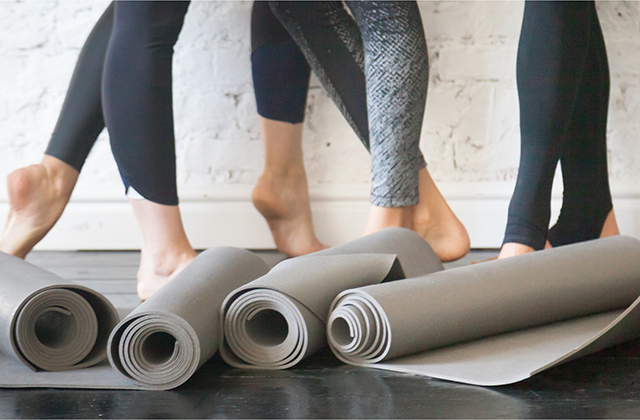Today, I’d like to teach you a bit about the history and main principles behind the Pilates method of training. Just so you know, I’m far from being an expert on this subject, nonetheless I thought this could a great way for you and I to learn more about this increasingly popular fitness system. Pilates teacher training Sydney passed the course as well as essential and intermediate Mat work exercises.
Pilates is a form of exercise that was invented by Joseph Pilates, a German circus performer and boxer who lived from 1883 to 1967. At the outbreak of World War I, he was put in an internment camp where he started to develop his own exercises using just a floor. His exercises were further developed and became the Pilates mat exercises that he later called “Contrology”.
Using the simple items available to him, he also developed series of exercises based on yoga, dance, and gymnastics. His methods of training were put to use during the time he spent in the camps as he helped rehabilitate soldiers and patients.
His main invention, and the tool most associated with Pilates is a table called the Reformer.
The Reformer is a table that uses a complex set of springs for exercises where resistance can be easily adjusted and controlled. Reformer exercises often need to be done with the assistance of somebody else to help with some of the movements.
There are literally hundreds of exercises that one can do with a Reformer table. Most exercises usually come with a few different variations to make it adaptable to a person’s fitness level.
Pilates exercises are low-impact, and put very little pressure on the ligaments and tendons so as to always minimize the risk of injury.
Other pieces of equipment used in Pilates training are elastics, springs, and medicine balls. Exercises done with these objects aim to provoke imbalances, which in turn activate a specific series of muscle stabilizers in your body.
Pilates’ exercises focus primarily on the abs, glutes, and core muscles. Core strength and torso stability are emphasized, and other, more superficial muscles usually get activated in the process.
This is a reason the Pilates’ method has been shown to help people with back pain. When the trunk becomes more stabilized, pressure on the back is relieved, and the body begins to move more efficiently.
This type of training focuses on exercises that are physically hard, but always smooth and controlled. The key here is quality, not quantity.
Pilates workouts, unlike many other fitness methods, include very few repetitions. Instead, the goal is often to slowly do one movement with precision while controlling breathing
For these reasons, Pilates can be practiced by practically any types of persons. Dancers, athletes, acrobats, as well as people of all age can greatly benefit from the
One cannot mention Pilates without mentioning the 8 fundamentals of the method. These principles, according to Joseph Pilates, help achieve balance, grace and fluidity to the body.
Here they are:
The 8 principles of Pilates
-Concentration: In the Pilates method, mind-body connection is extremely important. It is thought that to optimize an exercise, one must be entirely focused on each movement.
-Centering: Pilates called the center of the torso, the “powerhouse”. This is the place where you should bring your focus when doing your exercises. All your strength and energy emanates from this area, and focusing on this particular area will bring calm to your body and mind.
-Control: The way you move during an exercise should always be done using the proper form. This means having complete control over your muscles, and leaving no part of your body unattended.
-Precision: As mentioned earlier, Pilates’ movements should be done slowly, and meticulously. One perfect movement is always preferable to a higher set of repetitions.
-Breathing: Joseph Pilates used to say that breathing was the most important part of any training regimen. In fact, breathing activated blood circulation and awakens blood cells and muscles. As you train, you should focus on your breathing, making sure you keep inhale fully before exhaling.
-Alignment: Pilates promotes good posture. Whether you are standing up or lying on the ground, you should make a conscious effort to be aware of the position of your pelvis, neck, head, and spine.
-Flow: Every Pilates movements should be executed with grace and fluidity. Even as you move from one pose to another, every transition and movement should be done gracefully so that strength and stamina are always forced to develop.
-Integration: This principle underlines the importance of combining every fundamentals into each movement. This is done so that your muscles work in tandem as you execute movements.
This might seem very abstract and esoteric, but they are the 8 principles taught in Pilates classes. From what I’ve gathered about Pilates, its workout seems to be an interesting combination of Yoga and body-weight exercises.
I hope I’ve managed to get you interested in Pilates, I, for one, plan to go out and try a class somewhere in the near future. Every training method has something to teach you, find out what’s the best for you, and you’ll quickly be on your way to a better, healthier lifestyle.
To read more about fitness and different cardio workouts, head over to [http://www.trainyourcardio.com].
Article Source: http://EzineArticles.com/expert/Charlie_Roy/1292577
Article Source: http://EzineArticles.com/7275092

